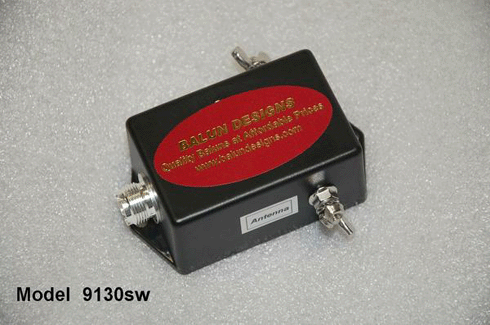|
Typical SWR relative to wire lengths are shown in the chart. SWR will vary based on topography, wire orientation and use of ground or counterpoise. For best results, use the longest wire shown on the table that will fit your installation constraints. Installing the wire as an Inverted L can change the feed point impedance and may require tuning (changing overall length of the wire) for best coverage of all HF bands. Rows in color are best overall lengths to use for optimum HF spectrum coverage. Experimenting by slightly changing the wire length (+ or-) is encouraged to provide best overall performance.
Installing a 1:1 choke balun at or near the unun will not allow the coax shield of the feed line to be used as a counterpoise. Any of the units can be installed three different ways. Ideal: Sloper configuration with one counterpoise but several different length counterpoises is better. Length of counterpoise should be approx. 20-30 feet but NOT resonant. If possible, run the counterpoise away from or perpendicular to the antenna wire.You can also use the unun with no counterpoise or ground if your feedline is at least 25+ feet long. In this configuration, the coax shield will act as your counterpoise. Typically, performance is better with no ground at the antenna, but you can try both ways. Good: Attach counterpoise stud to a radial field of at 4 wires minimum, 10-15 feet long each. Again, more is better and will increase efficiency. Longer length radials are not necessary.Workable: Attach counterpoise stud to a good ground rod at the feed point of the antenna.Note: Short antenna lengths will never be capable of performing as a highly efficient antenna. The intent of this unun is to allow full HF coverage for portable applications or in restricted installations such as HOA managed communities. Longer wire lengths will certainly be more efficient and provide better performance.
|

